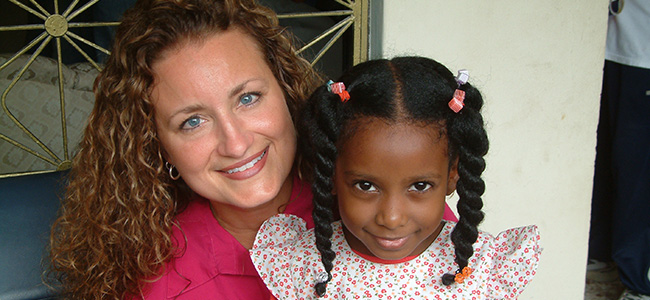Are you thinking of adopting a baby abroad? If you and your partner, (or simply you yourself) are considering of carry out an international adoption, it is important to know the steps of the process and that you keep in mind that each country has a series of different requirements.

This guide will advise you about the steps that you need to undertake and the instructions for the various agencies you must apply to in Spain in order to adopt a child abroad.
Submit an application. First of all you should find the relevant agencies within your Autonomous Community, (Child Protection Services, The Department of Social Welfare, Child Adoption Services). Here you will receive general information about international adoption, and the necessary conditions and procedures for adopting a child.
You should then fill out an application and attach it to the necessary documentation required for your regional administration. This is the first step in the adoption process.
 Obtain a Certificate of Suitability. The certificate of suitability is an essential requirement when adopting a child abroad. It is obtained through a test conducted by psychologists and social workers. In it they will evaluate the personal, family and social situations of the potential adopter/s as well as their capacity to create safe and stable relationships, educational abilities and ability to care for a minor.
Obtain a Certificate of Suitability. The certificate of suitability is an essential requirement when adopting a child abroad. It is obtained through a test conducted by psychologists and social workers. In it they will evaluate the personal, family and social situations of the potential adopter/s as well as their capacity to create safe and stable relationships, educational abilities and ability to care for a minor.
In order to do this it is necessary to attend an adoption preparation programme, which includes group sessions with the applicants and professional experts in adoption with the aim of reflecting upon the needs of the youngest adoptees and to help you with coming to a final decision.
Only the public office responsible for each Autonomous Community will be able to provide these Certificates of Suitability, the application period is 3 years from the date of submission, provided that the situation of the applicants does not change.
Choose an Application Process. Now it is important to decide upon a method of application processing: whether it is through the Public Administrative Office or through the ECAIS (Collaborating Agencies for International Adoption) . This choice will be based on the child´s country of origin. There are countries that only allow one of these methods and others that allow both.
Send your Records. The next step is to prepare a dossier with of all the documents requested by the child’s country of origin. It is possible to find this information through the Child Services department of your Autonomous Community or the ECAI, if this is your chosen application process.
• Sworn Translation : If the country uses a different language than Castilian Spanish, the documents should be translated by a Sworn Translator. At Traductores Oficiales, we are able to translate these documents into any language, as we currently have over 150 sworn translators accredited by the Ministry of Foreign Affairs. All of our translations will be duly authenticated and signed by a sworn translator, who is responsible for granting validity and legality to a document translated into another language.
• Validation: The document should be duly stamped or legalised and authenticated in the foreign country of origin. The final stage is the legalisation at the Spanish Ministry of Foreign Affairs and Cooperation and the Consulate of the country in question.
• Send Documents to the Country of Origin: This is can be carried out through your chosen method of application process, through the relevant Public Administrative Office or through the ECAI.
Waiting for a Response. The time between the submission of an application to the country of origin and receiving a proposed allocation varies in each case. It depends on factors such as the circumstances of the country itself, legislative changes, child protection policies… Such factors may delay or even prevent a successful adoption from happening.
But if, finally, a child has been assigned to you, the proposal will be initially sent to the Autonomous Community Authority. This contains all the relevant information about the child, (medical history, mental health records, photographs…).
The competent authority within the Autonomous Community that declared the suitability of the applicants must state in this important phase of the process where the circumstances of the child need to be taken into account, their agreement or disagreement with the assignment after the assessment of the received information pertaining to the child and the applicants respectively
After this, the parents can also accept or reject the proposal.
Travelling to the Country of Origin. Depending on the country, you will need to go there once or twice: once to get to know the child and a second time to legalise the adoption.
In order for the child to be able to leave their country of origin, the Spanish Consulate from that country must record the adoption in the Consular Civil Registry or issue a visa of family reunification.
The Child’s Arrival. In order to complete the adoption and to establish its legality abroad as it is recognised in Spain, it is essential that, once you return to your residential home, you present a registration of adoption application to the Civil Registry in your area. Furthermore, it is advisable that you announce your arrival in Spain with the adopted child to the Child Protection Services in your Autonomous Community.
Monitoring the Child’s Progress. All countries require the submission of reports monitoring the child’s adjustment. Remember to submit these this with the regularity required by the country (it varies depending on the country of origin), if you do not supply them it can cause conflicts and even jeopardise future adoptions.
